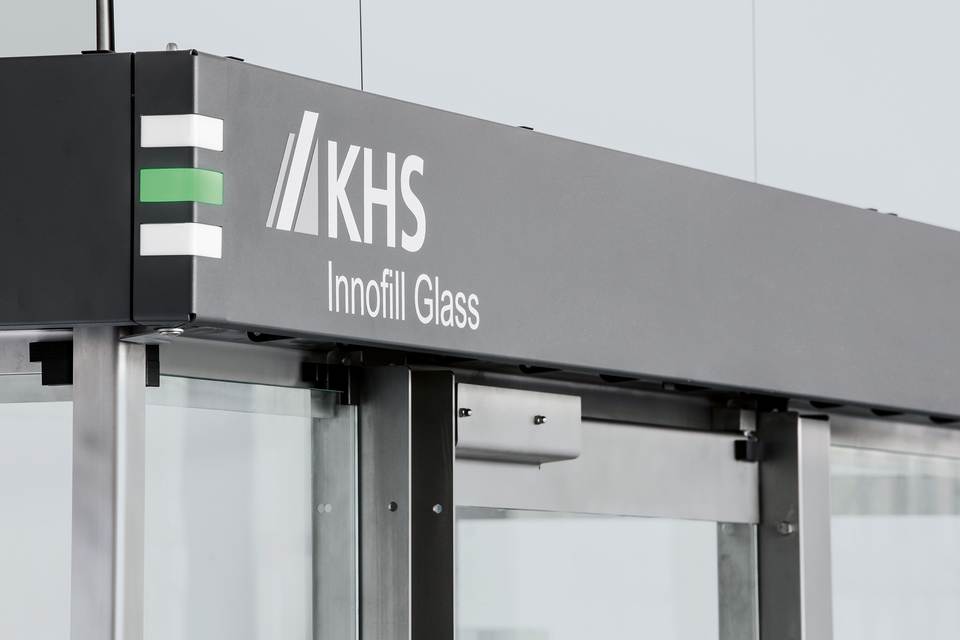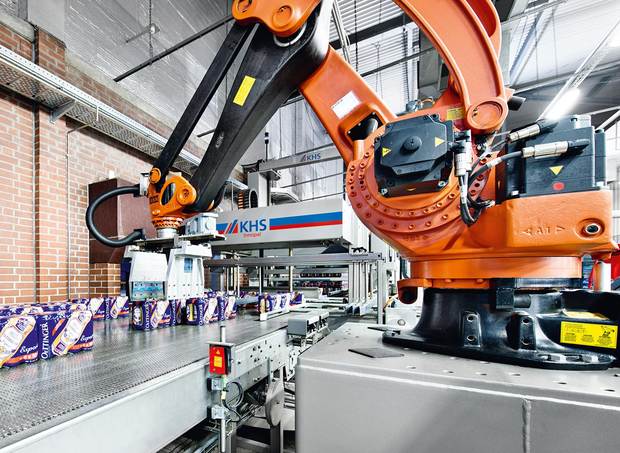Your contact on this topic
Christian Wopen
Press and Public Relations
Phone: +49 251 625561-21
Email: wopen@sputnik-agentur.de
Theaterplatz in Basel, Switzerland, boasts an extraordinary spectacle admired by locals and visitors alike. In its commodious Fasnachtsbrunnen, ten playful yet very technical sculptures tirelessly perform their various tasks like machines, in constant flow with the water, scooping, ladling, sieving and spraying it, the individual components forming a fascinating whole, hour for hour, day by day, year for year.
This work of genius, famous the world over, was fashioned by Swiss artist Jan Tinguely, who also integrated moving, mobile elements no longer required by the stage designers at the Rhine metropolis’ city theater into his masterpiece. Large, mobile machines were typical features in the work of the Swiss artist who died in 1991. Art history has consigned them to the category of kinetic art – or the form of artistic expression where motion forms an integral, aesthetic part of the creative whole.
Tinguely’s lively, clattering, motorized sculptures were his way of treating industrial material creatively, a topical artistic expression of the age of machines. His motto was as follows: “Everything flows; nothing stands still!"

“Santiago Calatrava’s creative work divines the essence of architecture. His architecture broadens our horizons and lends expression to the energy of the human spirit, it enchants our imagination and delights us with the wonders that plastic form and dynamic construction can produce.”
Art and technology closely linked
This combination of art and technology is indeed nothing unusual, with the origins of both closely linked, as Dr. Danièle Perrier reminds us in her much-acclaimed essay on kinetic art (Die kinetische Kunst): “The Ancient Greeks described art as techne, from which the word ’technology’ can be derived.” The former assistant professor, art advisor, curator, museum director, and current vice-president of the International Association of Art Critics AICA also proves for generations of artistic movements and groups “that kinetic art, when interpreted in the sense of moving sculpture, bears witness to the development of our technical achievements”.
Incidentally, the boundaries between art, technology, and function were also fluid, if not non-existent, for perhaps one of the greatest artist of all time, Leonardo da Vinci. This universal genius acted as a painter, sculptor, architect, mechanic, engineer, scientist, philosopher, and musician as required or at the request of his clients. He not only created the most famous painting the world in his Mona Lisa but was also a great admirer of machines.
From Leonardo da Vinci ...
Leonardo also busied himself with the building of fortresses, bridges and canals; he developed a rapid-fire canon that shot the first streamlined missiles, an automobile complete with gears, and a tank. He also designed a diving suit with a snorkel and the first glider – an elegant, pyramid-shaped parachute that actually flies. This was proved in June 2000 by Adrian Nicholas from Great Britain who gently and safely glided to the ground from an elevation of 3,000 meters on a replica of Leonardo’s masterly flying machine.
What still remains unclear is whether Leonardo also wanted to explore the soul when he dissected more than 30 bodies in the course of his anatomical studies to examine muscles, bones, organs, and vessels – and became the first to observe diseases such as arteriosclerosis. Was he looking for parallels between animate and inanimate objects? We don’t know. What we do know, however, is that French doctor and philosopher of the Enlightenment Julien Offray de La Mettrie caused an absolute scandal a good two hundred years later with the publication of his book L’homme machine (Machine man). In it he compared the functions of the human organism to the functionality of a machine.
Yet are these abstracting parallels not compelling? For the observer of fascinating filling technology, perhaps, watching hundreds or even thousands of perfectly orchestrated, precisely coordinated processes per second? Studying moving machines, which seem to control and monitor all logistic functions practically independently, like a living, breathing organism? Where energy and fluids course through its inner workings – non-stop – to produce a flawless end result, namely tens of thousands of products per hour, each and every one of absolutely perfect quality?
If we were to twist art expert Perrier’s perspective to this rather unaccustomed view of such outstanding technology, then her ’technical achievements’ would here become veritable moving sculptures of the 21st century. It has thus long been undisputed that many industrial products and machines have since gained the status of object d’art – if not more.
“ ‘Made in Germany’ also incorporates the promise of good design.”
Professor Peter Zec, Head of the Design Zentrum and senator of the International Council of Societies of Industrial Design ICSID
... to the Red Dot Award
It’s for this reason, for instance, that the Design Zentrum NRW, located at the World Heritage Site Zeche Zollverein in Essen, Germany, presents the Red Dot Award for outstanding design once a year. The various award winners – from automobiles to dentist’s chairs – thereafter enjoy cult status and are shown at the exhibition like works of art. “Germany lives from launching premium products to the world market, which generally have a high quality of design,” comments Professor Peter Zec, head of the Design Zentrum and senator of the International Council of Societies of Industrial Design ICSID. He says, “’Made in Germany’ also incorporates the promise of good design.”
Genius Santiago Calatrava ...
Architecture also belongs to our industrial age, albeit on a rather grand scale. Nobody represents the synthesis of technology, movement and sculptural artwork with as much consistency and perfection as Santiago Calatrava. This may be the result of his training; he studied architecture in Valencia, Spain, art at the École des Beaux Arts in Paris, France, and constructional engineering at the Swiss Federal Institute of Technology (ETH) in Zürich, Switzerland.
As far back as in 1997 he wrote of the correlation between art and architecture: “Architecture and sculpture are like two rivers with the same water flowing along them. You could imagine sculpture to be unrestricted plasticity, whereas architecture is plasticity, which has to bow to a function and the blatant idea of human scale (through function). Where sculpture ignores function, is unbroken by mundane issues of use, as a form of pure expression it is superior to architecture.”
Calatrava has another passion pertaining architecture, namely a passion for motion, also in its nomological form with real, repetitive movements. It is manifested time and again in his buildings, from the early folding doors of the Ernsting’s family warehouse in Westphalia, Germany, to the newer 82-ton sunshade of the art museum in Milwaukee, Wisconsin, USA.
"Everything is potential movement,” he explains. “Newton’s second law states that the acceleration of an object depends on two things – the net force applied to the object and the mass of that object. Mass and acceleration are linked and there is thus time in force. I realized that architecture is full of moving things, from the doors to the furniture. Architecture itself also moves and with a bit of luck turns into a beautiful ruin. Everything changes, everything dies, and cyclic movements hold an existential significance.”
... our modern-day Leonardo?
That was a basic outline of Calatrava’s slightly abstract philosophy on architecture, art, function, motion and the existential things in life, which are all reflected in modern technology. Joseph Seymour, former managing director of the port authorities of New York and New Jersey, was bolder and more to the point when he commissioned Spanish architect Calatrava to build the new railroad station on Ground Zero: “We see him as the da Vinci of our modern age. He combines light and air and structural elegance with strength!” When art meets technology.
Architecture in motion
Spanish star architect Santiago Calatrava manages to integrate his fascination with movement into his buildings like no other. His work is thus the perfect synthesis of moving technology and aesthetic art in architecture.
The combination of art, architecture and technology is the foundation of Santiago Caltrava’s outstanding oeuvre. The fourth essential element in his creations is his fascination with movement which he is convinced can also be found in all static objects and systems.
As a result, in his several decades of creative activity Calatrava has specifically designed and built structures, which symbolize motion or even make it possible, time and again, these including airport terminals and railroad stations, subway stations, bridges, the Transportation Hub at the new World Trade Center under construction in Manhattan and a planned cableway, which at some stage in the future will link Manhattan and Brooklyn with Governors Island in New York.
All these structures, even his futuristic office and residential buildings, have one thing in common: they are like moving sculptures, which in turn are marked by filigree yet strictly systematic structures. Santiago Calatrava’s extensive and extraordinary catalog of works has earned him countless awards over the past decades. In 2005 he was presented with a gold medal by the American Institute of Architects for being one of the most significant and innovative architects of our modern age.
Calatrava’s highlights from A to Z
- Athens: Olympic Sports Complex
- Barcelona: Port de Barcelona, radio tower
- Buenos Aires: Puente de la Mujer
- Dallas: airport
- Jerusalem: Light Rail Train Bridge
- Kuala Lumpur: KL Linear City
- Los Angeles: Cathedral Square
- Madrid: Barajas Airport
- New York: World Trade Center
- Transportation Hub
- Santa Cruz de Tenerife: Auditorium
- Stockholm: Olympic Stadium
- Toronto: airport bridge
- Valencia: Palau de las Arts Reina Sofia
- Zürich: Stadelhofen station
Moving technology
German Design Award for ClearLine by KHS
The German Design Award 2014 goes to ... ClearLine by KHS! What’s very special about this is that the German Design Council didn’t just award a prize for a single product but for an entire design concept. Why?
To come straight to the point, KHS’ ClearLine philosophy optimizes and consistently reconciles aesthetics and functionality and at the same makes machines and lines easier to operate.
But let’s deal with one thing at a time. The German Design Award, highly esteemed both within and outside Germany, has been awarded by the German Design Council for 60 years. A total of 1,900 entries were judged for 2014 by 30 design experts from the fields of commerce, education and science. As a rule, the council selects individual products for distinction. What the jury lauded as a special feature of ClearLine from KHS was its uniform design concept, which covers all the machines on a beverage filling and packaging system and also visually emphasizes KHS’ line expertise.
What’s behind it all? The creators of ClearLine for KHS machinery attached great importance to aesthetic, tactile, and ergonomic design. The focus was also on simplifying functions and reducing the number of parts with the goal of enhancing transparency, improving clarity, cutting down on the maintenance and cleaning effort, and optimizing the hygienic design. ClearLine also includes the new machine operating system known as the Human Machine Interface or HMI.
Control and monitoring of machines and production lines is now combined in a uniform interface (hardware and software). The operator guides the machine and process using simple buttons, colored graphics, easy-to-remember icons and interactive handling instructions. The ClearLine operating concept has already won a number of awards, including the red dot: best of the best, the iF product design award and the iF gold award.
Dr. Franz-Josef Strittmatter, journalist and publicist, Dachsberg, Germany
























